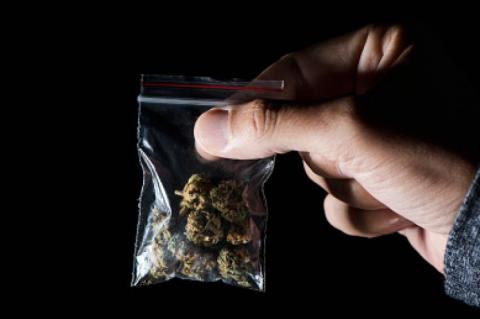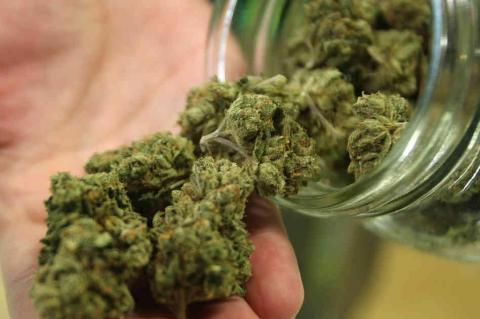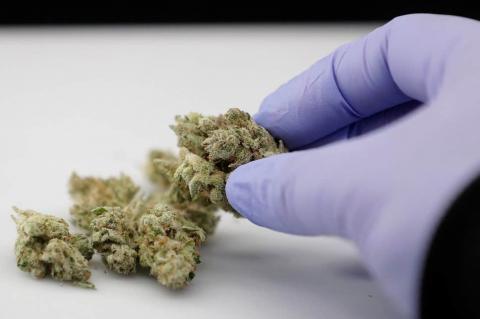California may have been the first in the country to pioneer cannabis law reform, but the Golden State is still struggling to eliminate the black market and sell affordable, legal pot, writes Erin Hiatt.
In 1996, California voters passed Prop 215 to legalize medical marijuana. In the years immediately following its passage, medical cannabis was a small and largely unregulated affair. With the passage of SB 420, the state allowed for collectives and cooperatives to handle cannabis sales "not for profit," although California soon became known as the "wild west of weed" and an easy place to score a medical marijuana card. The state's cannabis industry became riddled with legal grey area, where cannabis companies on the scale from illicit to semi-legal essentially coexisted.
With the passage of Prop 64 to legalize marijuana, California launched two parallel, legal markets: adult use and medical. But even so, the black market has not gone away, as proponents of the new law had hoped. Many argue that the industry is overregulated to the point of exclusionary, making if difficult for many players to either enter the industry, or to compete in it. The new program's pricey licensing fees, rigorous testing standards, hefty taxes, zoning restrictions, and altogether costly burden of getting involved have laid fertile ground for the illicit market to grow.
California is expected to ring in $3.1 billion in legal cannabis sales by the end of 2019. That's up from $2.5 billion last year. Any industry would be thrilled with an annual growth rate of 23 percent, but that $3.1 billion pales in comparison to California’s black market sales, expected to haul in more than $8 billion.
Among other expenses like attorneys and licensing fees, legally compliant businesses often pay taxes exceeding 30 percent, and are unable to deduct employee payroll or other business deductions on their tax returns due to federal regulations — that extra business expense then falls on consumers. Black market operations simply don’t face the same expenses and can keep their prices lower.
You can’t really blame California cannabis consumers if they are unknowingly, or even knowingly, buying from the black market. Even though there are 583 licensed pot retailers and 263 home-delivery outfits throughout the state, Weedmaps, the ubiquitous online tech company that connects users to local dispensaries, has been listing thousands of dispensaries and delivery services on is platform, making it difficult for regulated businesses to compete against the black market.
So while cannabis regulators continue their work on sorting out cannabis tax structures and quashing illegal businesses, some cannabis companies are taking it upon themselves to step in and connect consumers with legal, affordable weed.
Alice Moon is the director of communications at Splitbud, an online ordering platform that offers daily deals on cannabis products for consumers in the Los Angeles area — a.k.a. the world capital of cannabis. Moon thinks that the firm, which soft-launched in June and officially launched in August , could fill an affordability gap for consumers. “The price of cannabis went up in general, but especially the cost of legalization for retailers, brands and cultivators,” Moon told Civilized. “Their costs went up, so they’re passing that cost onto consumers. And we [Splitbud] really want to bring those illicit consumers into the [legal] market.”
Splitbud is a family-owned business whose name was inspired by the days when “you and your buddies would all pitch in and grab together. Everyone paid less and got more.” They offer some deep discounts — up to 65 percent — making some of the prices closer to the cost of weed in Colorado than in California. The company secures these deals by negotiating bulk pricing with cultivators and distributors. Some buds sell for $50 a quarter ounce, and they also sell edibles, prerolls, vaporizers, and concentrates.
Moon explains that the site is easy to use, and it’s not necessary to be a Los Angeles resident to utilize the service. Simply go to the website, create a user profile, and submit your ID to certify that you are of legal age to purchase. The verification process takes anywhere from one to 24 hours, but once that’s completed, people can order for delivery or pick-up.
Moon says that even though Splitbud is Los Angeles-centric, their delivery service covers a lot of ground, going as far east as Pasadena. “Right now, we’re working with two [dispensaries],” Moon said. “Marina caregivers, and Koreatown Collective. Consumers can either choose to pick up from those dispensaries same or next day. There is a $10 delivery fee, but with the discount and the daily deals, it makes up the difference.”
Splitbud is hoping they can make a long term impact, not only by connecting consumers with more affordable weed, but by helping them understand the benefits of buying cannabis from compliant businesses. “A lot of people lack awareness, and consumers don’t know if they’re buying from a legal business or not,” Moon said.
So far, their impact plans include street teams, utilizing social media influencers, posting content on the WeedTube (YouTube for weed), and an educational blog to connect consumers with information. Splitbud is also working on a social responsibility with an eye toward having more local engagement and impact.
In the meanwhile, California lawmakers are still grappling with useful responses to improve the legal cannabis market while reducing illegal sales. Some ideas under consideration are fines for websites that advertise unlicensed pot shops, the creation of a state-sanctioned bank for compliant businesses, and a push to get more local governments to include legal businesses within their borders (76 percent of cities and 69 of California counties have banned cannabis stores).
The importance of consumers having access to and buying from legal canna-businesses is coming more into focus, as the industry hit its first major crisis with the proliferation of counterfeit, illicit market vape carts that are suspected of sickening more than 1,080 people and claiming the lives of at least 23.
Since Splitbud’s June soft launch, more than 3,000 people have signed up on the site, proving that consumers are eager to purchase tested, licensed, and safe products, especially when they are affordable.
Other companies are trying different approaches to bringing consumers more affordable weed. There’s the discount weed brand Dime Bag from Loudpack Farms, who lower their price by cutting out the middleman and growing and processing their its own weed, and utilizing their own distribution networks. There’s also Flower.co, a membership-based cannabis wholesaler (anyone can purchase, but the best deals come through purchasing a membership), who sell in quarter ounces or more by delivery only.
Moon says she would like to see stronger action from lawmakers to bring down the cost of legal weed. “It’s been a challenge for a lot of companies to operate because of the licensing [requirements,” she said. She would also like to see the legal industry regulated in a way that allows more companies to get involved and that protects those that are compliant. “I think illegal dispensaries need to be shut down," she said, "and the city needs to be more flexible with the licensing process."










